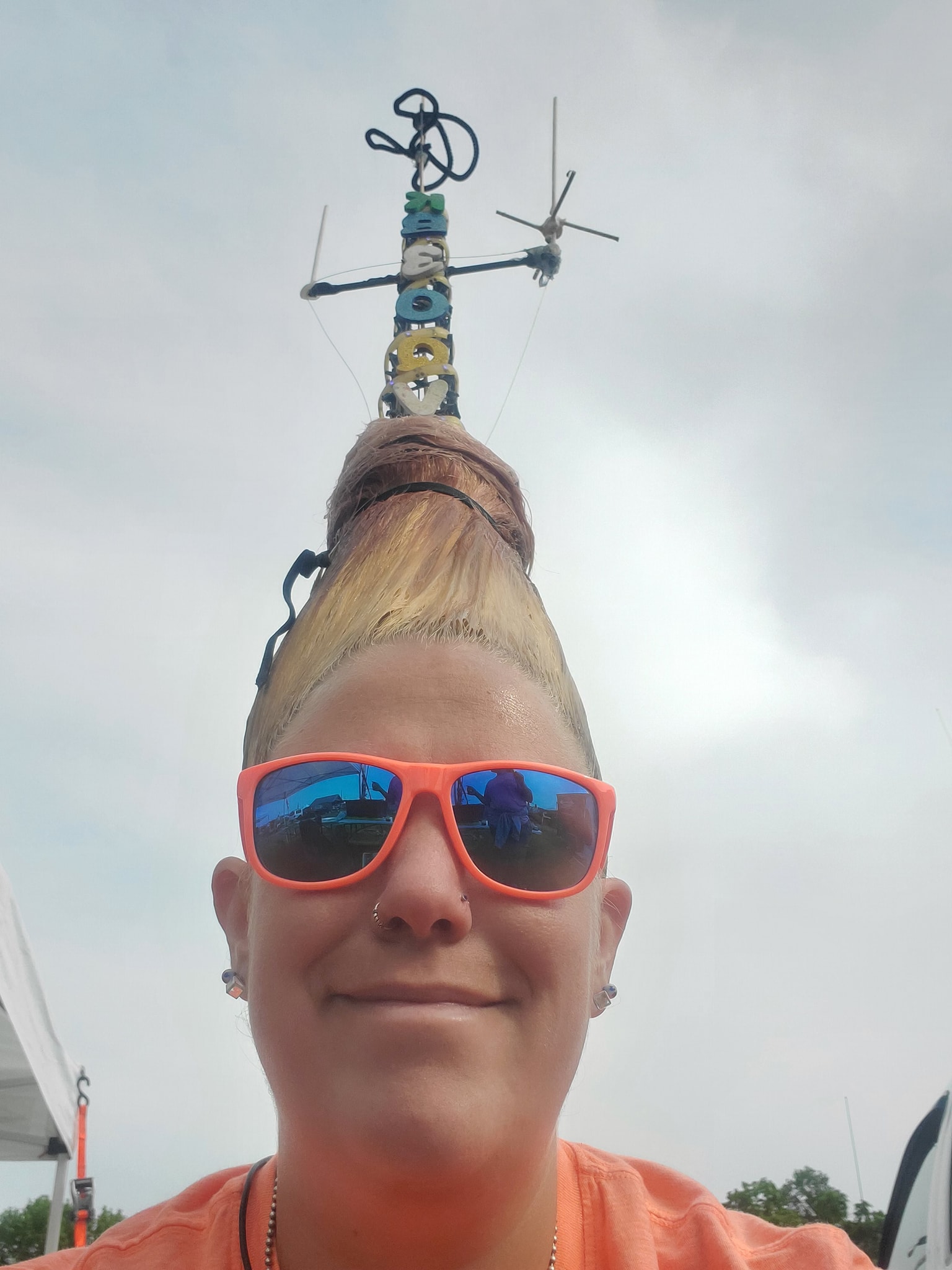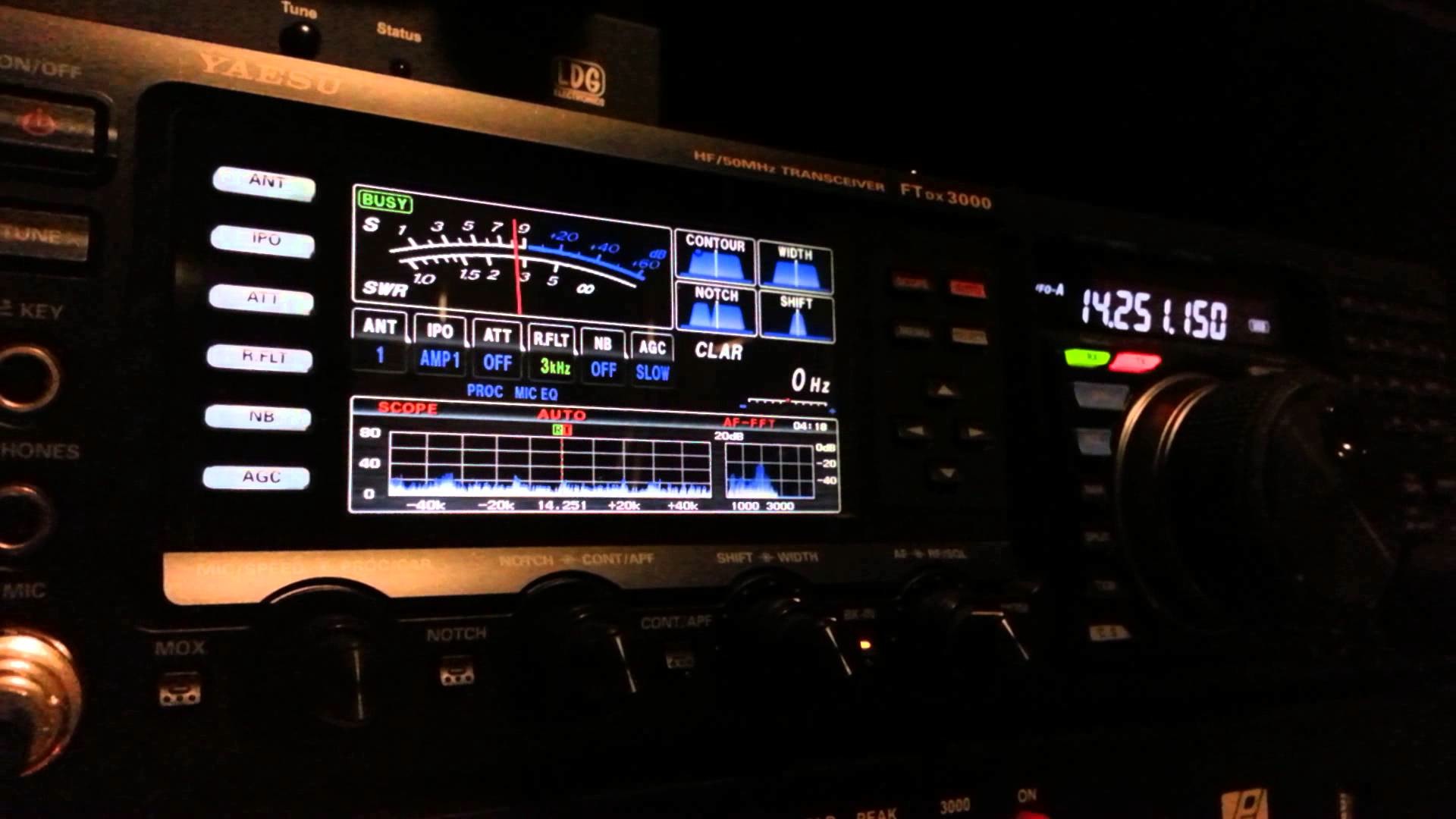Every year, tens of thousands of people descend upon Dayton, Ohio, for the Hamvention.
This is an event that has nothing to do with food.
The Dayton Hamvention is the world’s largest amateur radio gathering, an event that started in 1952 and has grown yearly since other than a two-year hiatus for the COVID-19 pandemic.
When the Hamvention returned in 2022, among the 31,000-plus in attendance was James Andrews, Sr. Comms Engineer for Hoosier Energy.
“I was glad to get back to it,” he said.
Andrews is one of multiple Hoosier Energy employees with an interest in ham radio, all of them starting from a different place but ending in the same goal – having a way to communicate in case of emergency.
“When I got my ham license in 1983, we didn’t have cell phones so we used walkies and a repeater patch,” he said. “In some ways, it’s still better because I’ve been places where I didn’t have cell coverage but I had radio coverage.”
***
Ham radio is more accurately amateur radio.
The term “ham” is not an acronym. Born out of the 19th century, it was used as a pejorative term to mock operators in professional wired telegraphy with poor Morse code-sending skills (aka – ham-fisted). The term continued after the invention of radio and with increasing amounts of amateurs dabbling in telegraphy, the “ham” amateurs were a nuisance to the professionals.
However, the amateur radio community embraced the term and by the mid-20th century, the intended insult was long forgotten.
Modern ham radio is a popular hobby and service that brings people together with the ability to communicate across town, across the country or across the world without internet or cell phones.
Ham radio operators are required to get an amateur radio license. There are three sequential levels of licensing exams – Technician Class, General Class and Amateur Extra Class. Each offers the operator who passes them access to larger portions of the amateur radio spectrum and shorter call signs.
***
During the COVID-19 pandemic, everybody was looking for a hobby while spending extra time at home.
Hoosier Energy Senior Safety and Training Specialist John Bullock was no exception, and world events made ham radio a hobby that was a potential necessity.
“At the time they started shutting down restaurants, then there were shortages of toilet paper and food,” he said. “Living about an hour away from Louisville, not long after there were protests and marches, and I thought, ‘If this keeps going, we may need different ways to communicate.’”
Bullock had always been interested in radio, familiar with CB radio having been born in the 1970s. But the idea of taking the 10-15 miles he could reach with a CB radio and turning it into 500 miles or more with ham radio was highly appealing.
“It was really a correlation of events happening in the world and my past passions of CB radio that pushed me into ham radio,” he said.
The bug bit Shannon Thom, Hoosier Energy Senior Vice President Member Engagement, much earlier. He had his first amateur radio license by age 9.
“I was probably 8 when I had this realization that when I walked from the laundry room to the garage at my grandmother’s house, the distance was not the same as it should be,” Thom said. “There was this mysterious room behind my grandmother’s laundry facility that had a door off of the garage.”
Thom asked what was in the room, and it turned out to be his late grandfather’s radio equipment.
“What fascinated me most was a Morse code oscillator and straight key on a piece of sheet metal bent up with speaker and transformer and a hand-written Morse code alphabet taped to the wall.”
By age 15, Thom was winning the Morse code competition at the Dayton Hamvention, a place well-known to the Andrews family.

Kristen Andrews, daughter of Hoosier Energy’s James Andrews, is better known as Antenna Hair Girl at the Dayton Hamvention.
Not only are they regular attenders, but the youngest Andrews daughter, Kristen, is known as Antenna Hair Girl with her picture in multiple world radio publications. She’s became a sort of celebrity of the Hamvention, even starting her own Facebook page.
In many ways, amateur radio is the family business.
“My wife and I are extra class, my daughter is licensed as general and her husband as technician while my youngest daughter is also a technician,” Andrews said. “My brother and his wife are both licensed – he’s general and his wife technician with both their kids technician. The only ones not licensed are my granddaughters, but at age 2 one of them already wants to play with the radio, so I gave her my old marine radio set.”
The interest was always there for Andrews, although it took some time to see it through.
He worked in a two-way radio shop in high school and then was a part-time disc jockey at the local FM station. After spending four years and seven months in the Navy as an electronic tech, then working in Saudi Arabia, Andrews went to college and worked as a broadcast radio engineer while completing his engineering degree. It was also after coming back from Saudi Arabia that he got his ham license.
***
Andrews, Bullock and Thom are just three of multiple Hoosier Energy employees with an interest in amateur radio. It’s not only a hobby, but a form of communication they all see as essential and practical, especially in the utility industry.
With an increased focus on grid reliability and potential emergency service interruptions, having a way to communicate in a crisis is a must.
“If we look at Hoosier Energy as a whole, just the employees scattered out all over our territory could create pockets of communication across the state,” Bullock said. “As part of Hoosier’s emergency planning program, my boss has said I’ll be embedded in Illinois if there’s a blackout. The assumption is we’ll still have cell phones and Hoosier radios, but if we lost a repeater in between the microwave towers, redundancy with another system (such has amateur radio) could help out.
“If we ever get in that situation, there will be so many things going on that communication will be critical.”
Hoosier Energy has taken steps in that direction with two radios at headquarters. One is preset to the repeater on the Indiana University campus as part of the Skywarn system with the National Weather Service. The other is in the basement where people would shelter in case of severe weather or some other disaster.
For ham radio veterans like Andrews and Thom, they’ve seen the benefits while working with state police, the Red Cross and other agencies in the past.

Ham radios are a key component of emergency operations for government, law enforcement and relief operations.
“It really helps,” Andrews said. “If there are tornadoes, you need to know if trees are down and you need people to go out and assess the damage. You may have a transmission line running through woods and unless you have a helicopter to scan quickly, it takes people on the ground to tell you where trees are on lines or wires are on the ground.”
How far the ham radio preparation can go remains to be seen, but Thom sees Hoosier Energy and its members with great potential.
“If we end up with 40 or 50 hams across southern Indiana who are part of our REMC network, it could be hugely beneficial for communications in the event ours fail,” he said.
And with radios already in place at headquarters, it’s not a reach to extend that network.
“We’ve already made the investment in ham equipment, it’s just a matter of getting coordination in place and setting up the frequencies we could utilize and pre-planning,” Bullock said.